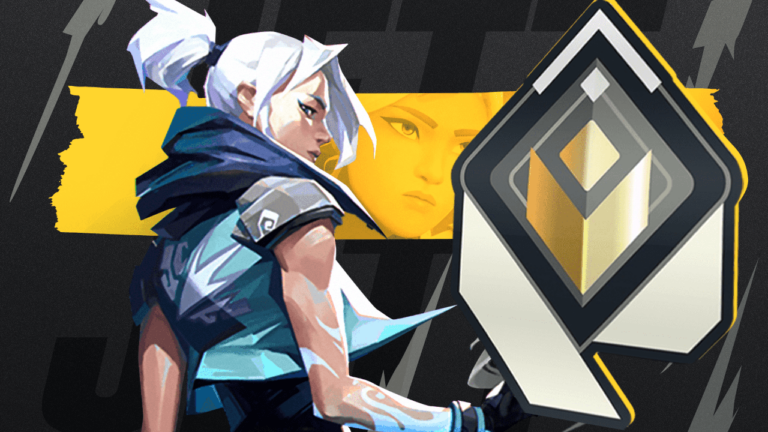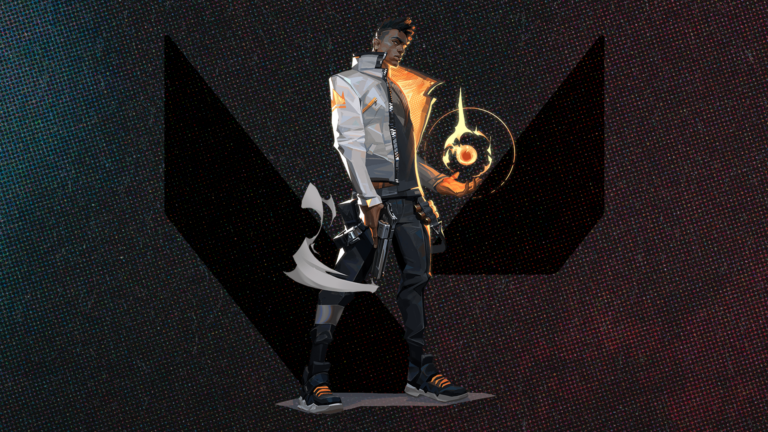
How to Start VALORANT Aim Training Like the Pros
So, you’re here because you’re either ready to start your VALORANT career or you’re already actively playing VALORANT, but you’re looking to tighten up your core mechanics. You want to ensure you can hit your shots between all the walls, smokes, and flashes. Developing a VALORANT aim training routine is a great way to improve your overall performance, and we’ve compiled some resources to help you with the process.
In this article, we will look at the tools available in VALORANT itself, as well as aim training tasks you can practice outside of the game, with some tips on how they will apply to your VALORANT matches. Let’s get started.
The Range

From the design process, Riot aimed to make VALORANT a competitive shooter that would last on the level of League of Legends. Understanding that players will want to experiment, warm up, and train, Riot built the Range directly into the game. The Range is a great place to feel out the different agents, experiment with their abilities, and practice your aim and reflexes in a few different firing range scenarios.
The central Shooting Range provides players with a customizable toolset where they can use any weapon they like, with scenarios that players can set for themselves to get the most out of their warmup or practice. We would suggest taking the time to practice your accuracy rather than your speed against the bots on the Shooting Range. You can also mix in working on techniques such as counter-strafing and movement while maintaining your accuracy to make sure that you’re as combat-ready as possible.
TenZ’s VALORANT Playlist on Aimlabs

One of the household names in VALORANT, TenZ, is considered by many to be a living aim god. It’s no secret that he takes great care to ensure that his aim is always warmed up and on point, and TenZ’s work in Aimlabs has often displayed that dedication. TenZ has been known to practice in Aimlabs on stream and on stage at VCT events.
This benefits your training and warmup regiment because TenZ has compiled a Aimlabs task playlist for VALORANT. The playlist runs through several tasks that will help with core VALORANT mechanics, so you won’t have to worry about showing up on the server and becoming the “I have X numbers of hours in Gridshot” meme; you’ll have worked on practicing the sort of shots and reflexes that you’ll run into round after round in-game. Now, we will run through the tasks on that playlist and see how they’ll apply to your VALORANT play.
Strafetrack
In this task, you’ll track a moving target at a consistent speed that moves left and right. This is an excellent starting scenario as tracking movement is a huge part of gunplay in VALORANT, when an opponent is moving past an entrance or hall you’re holding or moving through a site. While the target does randomly change directions, players will do the same thing in combat, and training yourself to react to that will pay dividends on the server.
Motiontrack
The second task on the playlist is Motiontrack, which continues to build on the tracking skill that we worked on prior, but it also adds in flicking practice as well, as you’ll shoot the center target before a second target appears elsewhere on the screen, forcing you to adjust to hit the target.
Things can be chaotic in VALORANT, and targets are not always going to appear where you expect them to or where you’re set up to aim at. Motiontrack will help you with tracking, flicking, and visual target identification and reaction.
Spidershot 180
This is an evolution of a popular Aimlabs task, Spidershot, except it works in a 180 flick between each shot. While you’re not going to be spinning 180 between every shot in every VALORANT round, developing this reflex will help against flanks, or split site collapses while you’re attempting to hold off against multiple angles like an absolute hero.
Imagine that you’re playing B on Haven, holding short against a B main rush, and a moment later, the attackers have pushed out from rafters, and you’re pinched. This sort of practice prepares you for those scenarios and builds up the muscle memory and target acquisition skills needed to succeed in that moment.
Multishot
This next task is a bit of a riff on the staple task, Gridshot, but with more chaos mixed in, which helps to replicate the pressure of a game scenario. Targets will appear on the screen, gradually getting bigger before they shrink and vanish, putting a timetable on your ability to hit them and adding a difficulty variable.
Motionshot Speed
Another task that will help you work on your flicking ability, with a focus on the speed at which you can hit each target. First, you’ll shoot a centered target, which will spawn a target that moves in a random direction, with a limited amount of time that you can hit the target.
This will help you work on those quick reactions, adjustments, and flicks that you will need to deal with an opponent who is swinging close up, where a few split seconds are the difference between winning or losing that engagement.
Motionshot Precision
This task is similar to Motionshot Speed, except the targets are smaller, and you have more time to react, so the task is scaled to focus on precision rather than speed.
Practicing this will help you with mid-ranged engagements, where you’ll be able to quickly target and fire on an opponent who is peeking you further out in hopes of securing a quick pick.
Audio Detection
VALORANT, like many tactical first-person shooters, relies heavily on audio cues, with players able to pinpoint the location of footsteps and immediately know a player is approaching or even wallbang them to eliminate them on the spot.
The Audio Detection task is tailored around developing that ability. You’ll hear a sound in front, behind, or to your sides, and then you’ll aim in that direction and fire. Remember, developing your reaction and reflex will not always be visual, especially not in games like VALORANT, so working on your ability to react to audio cues is extremely important.
Tailoring Your Routine
So, we’ve listed a few options you can use to practice with; what next? Your next step will be to determine what works best for you. That may sound ambiguous, but it all comes down to experience and repetition. The more you practice and train, the more you’ll be able to identify what is producing results, and then you can narrow down your routine. That said, we have a few things to consider as you begin to shape your training or warmup routines.
Results Take Time
Much like exercising in the gym, results will take time and repetition. You won’t run through TenZ’s Playlist once and instantly develop every skill needed in VALORANT. You’ll need to work on this over time and develop it like any other muscle.
Identify Improvements AND Shortcomings
Once you have begun working on a training or warmup routine, you’ll start to see areas where improvements are shining through. You’ll notice that your tracking is improving, or you’ll be hitting flicks more consistently. This is great, and it shows that the work is paying off.
However, Identifying areas where you haven’t been improving can inform how you adjust your training to work on those shortcomings. If certain skills are developing while others are not, seek out training such as Aimlabs tasks that specifically target that skill set. Work those tasks in for a few extra repetitions periodically throughout your week, and keep an eye out for when those abilities also begin to improve.
You Can Practice Too Much
Skills such as aim training are not something you can just brute force into results. Aim training for 12 hours straight will not provide the same gains as aim training for 12 days. Repetition and practice consistently, day after day, is the productive way to develop a skill set.
As a good starting point, we would suggest you begin with a 30-minute warm-up routine that you can run before you jump into your matches each day. Starting with a run-through of the TenZ playlist on Aimlabs, then moving into the Range for 10 minutes where you can work on keeping your aim warm on a weapon of your choice while you also throw in movement drills that can keep you fresh and zoned in on your VALORANT game.
You may want to switch up the specifics, doubling up on certain practices or skilling other aspects here and there, and maybe you want to spend a few extra minutes warming up, or you won’t have as much time every day. Most importantly, you have a practice routine that your body and mind can adapt to over time. Don’t overdo it.
HAVE FUN
It’s corny, we know, but you will get a lot out of practice and training when you’re enjoying the time you’re doing it. You don’t have to be some brutal coach beating yourself into submission to get results. Practice with purpose, and don’t let it begin to feel like labor or punishment. Practice with the right mindset and for the right reasons, and you’ll get the most out of your regiment.





